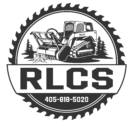introduction
Invasive species control is a critical aspect of preserving Oklahoma’s diverse ecosystems. Species like buckthorn and Russian olive pose significant threats to native plants and wildlife, disrupting the delicate balance of natural habitats. Forestry mulching is an effective and sustainable method of managing these invasive species, offering a powerful solution for habitat restoration in Oklahoma. In this article, we’ll explore how forestry mulching works and why it’s a preferred technique for invasive species control and habitat restoration in Oklahoma.
What is Forestry Mulching?
Forestry mulching is a land clearing method that uses specialized machinery to cut, grind, and clear unwanted vegetation. The process involves mulching machines that shred invasive plants directly on-site, converting them into a natural mulch layer that decomposes and enriches the soil. This eco-friendly approach leaves the soil structure intact and minimizes erosion, making it an ideal choice for invasive species control and habitat restoration.
The Threat of Invasive Species in Oklahoma
Oklahoma’s diverse ecosystems are home to numerous native plants and wildlife. However, invasive species such as buckthorn, Russian olive, and others threaten these ecosystems by outcompeting native plants for resources, altering habitats, and reducing biodiversity. Without proper control, invasive species can spread rapidly, causing long-term damage to natural habitats and disrupting the balance of local ecosystems.
- Buckthorn: Known for its aggressive growth, buckthorn crowds out native plants, disrupts soil composition, and degrades habitats for native wildlife.
- Russian Olive: This fast-growing invasive tree displaces native vegetation, alters water flow in riparian zones, and reduces the availability of resources for native species.
How Forestry Mulching Helps Control Invasive Species
Forestry mulching offers a targeted and efficient solution for controlling invasive species like buckthorn and Russian olive. Here’s how:
- Immediate Removal: Forestry mulching removes invasive species on the spot, without the need to haul away debris. This method reduces the seed bank and immediate regrowth of invasive plants.
- Soil Health Improvement: The mulched material decomposes naturally, enhancing soil fertility and promoting the growth of native plants. Unlike traditional clearing methods, forestry mulching doesn’t disturb the soil, helping to prevent erosion and maintain habitat stability.
- Cost-Effective and Efficient: Forestry mulching is a one-step process that clears and mulches vegetation in a single pass, making it a cost-effective method for large and small-scale projects. It reduces labor costs and time compared to manual removal or chemical treatments.
- Minimizes Environmental Impact: Traditional methods of invasive species control, such as herbicides, can negatively impact native plants and wildlife. Forestry mulching, on the other hand, is an environmentally friendly approach that preserves the natural landscape while effectively managing invasive species.
Benefits of Forestry Mulching for Habitat Restoration in Oklahoma
- Supports Native Plant Growth: By clearing invasive species, forestry mulching opens up space for native plants to thrive. This restoration of natural vegetation helps support local wildlife and improves the overall health of the ecosystem.
- Reduces Soil Erosion: The mulch layer left behind helps to stabilize the soil, preventing erosion and promoting water retention. This is particularly important in riparian areas where invasive species often threaten native plant communities.
- Improves Wildlife Habitat: Restoring native plant communities enhances habitats for local wildlife, providing food and shelter for birds, mammals, and pollinators. This biodiversity boost is crucial for maintaining healthy ecosystems.
- Sustainable Land Management: Forestry mulching is a sustainable approach to land management, allowing for ongoing control of invasive species without repeated use of chemicals or heavy machinery.
Conclusion
Forestry mulching is a powerful tool for invasive species control and habitat restoration in Oklahoma. By targeting invasive plants like buckthorn and Russian olive, this method helps protect native ecosystems, improve soil health, and restore natural habitats. For landowners, conservationists, and anyone invested in protecting Oklahoma’s natural environment, forestry mulching offers a sustainable and effective solution to invasive species management.
Call to Action
If you’re facing challenges with invasive species on your property, consider forestry mulching as a proactive approach to protect and restore your land. Contact a local forestry mulching service in Oklahoma to learn more about how this method can help preserve the natural beauty of your property while supporting the health of local ecosystems.


